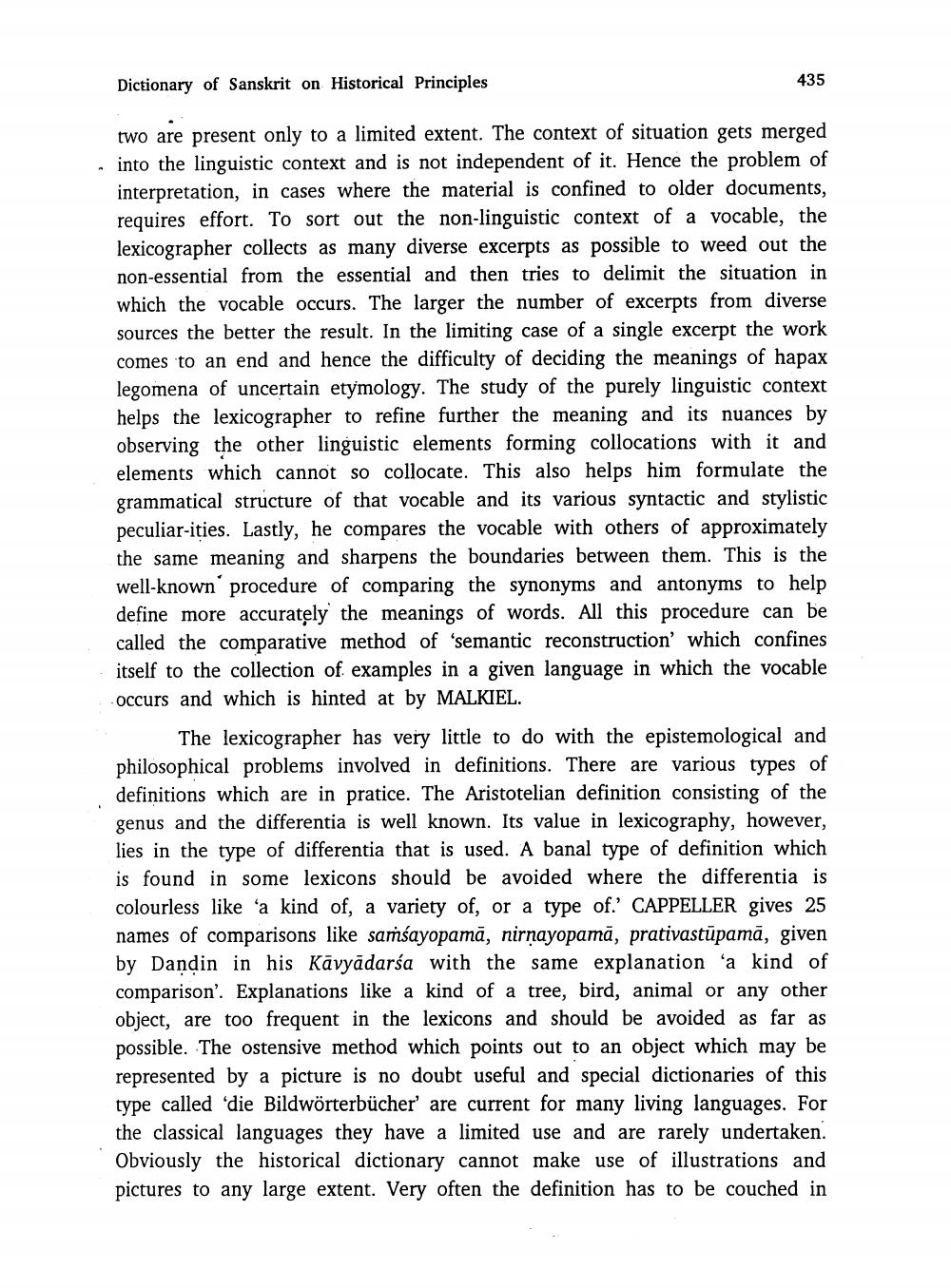________________
Dictionary of Sanskrit on Historical Principles
435
two are present only to a limited extent. The context of situation gets merged into the linguistic context and is not independent of it. Hence the problem of interpretation, in cases where the material is confined to older documents, requires effort. To sort out the non-linguistic context of a vocable, the lexicographer collects as many diverse excerpts as possible to weed out the non-essential from the essential and then tries to delimit the situation in which the vocable occurs. The larger the number of excerpts from diverse sources the better the result. In the limiting case of a single excerpt the work comes to an end and hence the difficulty of deciding the meanings of hapax legomena of uncertain etymology. The study of the purely linguistic context helps the lexicographer to refine further the meaning and its nuances by observing the other linguistic elements forming collocations with it and elements which cannot so collocate. This also helps him formulate the grammatical structure of that vocable and its various syntactic and stylistic peculiar-ities. Lastly, he compares the vocable with others of approximately the same meaning and sharpens the boundaries between them. This is the well-known' procedure of comparing the synonyms and antonyms to help define more accurately the meanings of words. All this procedure can be called the comparative method of 'semantic reconstruction' which confines itself to the collection of examples in a given language in which the vocable occurs and which is hinted at by MALKIEL
The lexicographer has very little to do with the epistemological and philosophical problems involved in definitions. There are various types of definitions which are in pratice. The Aristotelian definition consisting of the genus and the differentia is well known. Its value in lexicography, however, lies in the type of differentia that is used. A banal type of definition which is found in some lexicons should be avoided where the differentia is colourless like a kind of, a variety of, or a type of.' CAPPELLER gives 25 names of comparisons like samśayopamā, nirnayopamā, prativastupamā, given by Dandin in his Kavyādarśa with the same explanation (a kind of comparison'. Explanations like a kind of a tree, bird, animal or any other object, are too frequent in the lexicons and should be avoided as far as possible. The ostensive method which points out to an object which may be represented by a picture is no doubt useful and special dictionaries of this type called die Bildwörterbücher' are current for many living languages. For the classical languages they have a limited use and are rarely undertaken. Obviously the historical dictionary cannot make use of illustrations and pictures to any large extent. Very often the definition has to be couched in




